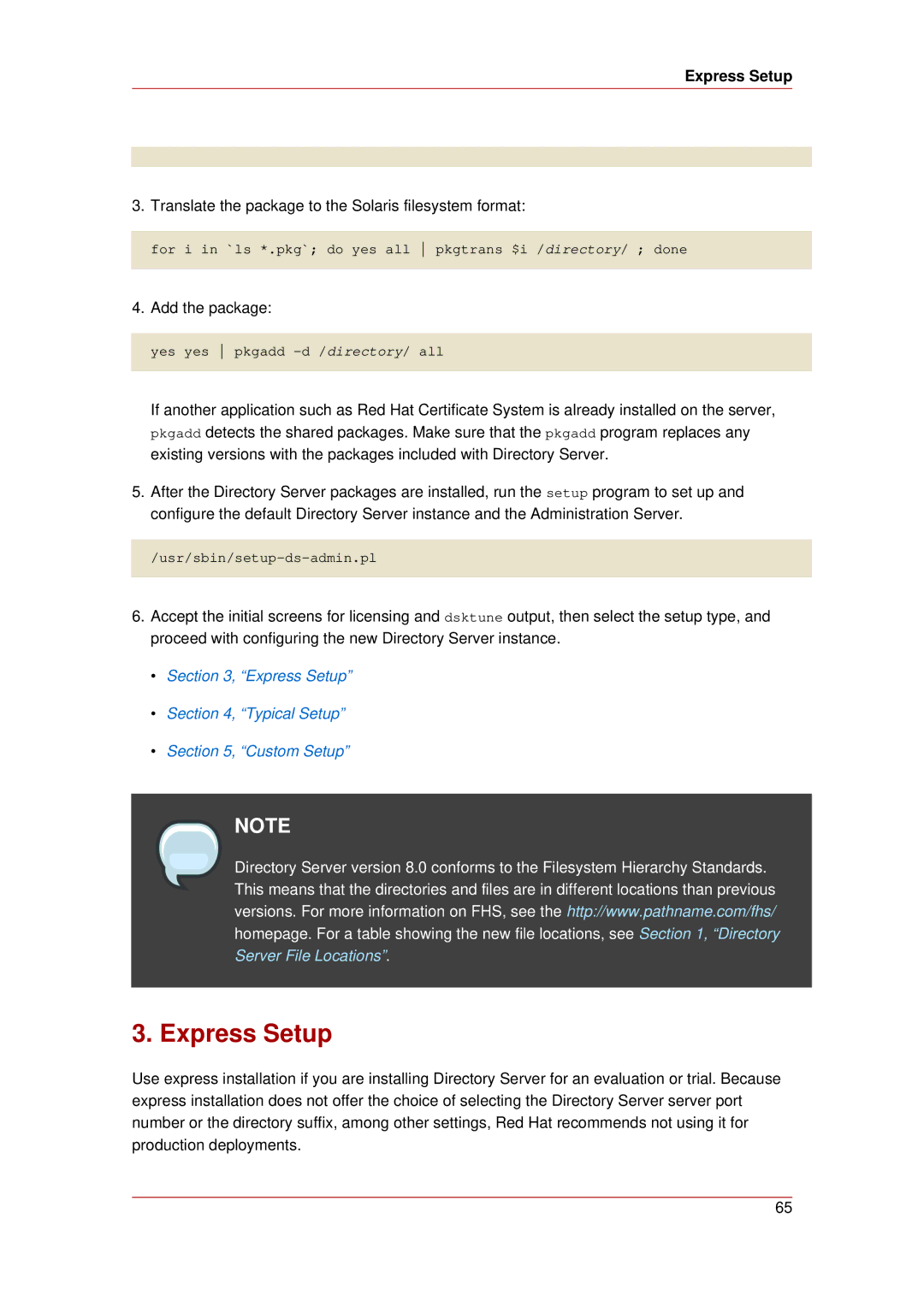
Express Setup
3.Translate the package to the Solaris filesystem format:
for i in `ls *.pkg`; do yes all pkgtrans $i /directory/ ; done
4.Add the package:
yes yes pkgadd
If another application such as Red Hat Certificate System is already installed on the server, pkgadd detects the shared packages. Make sure that the pkgadd program replaces any existing versions with the packages included with Directory Server.
5.After the Directory Server packages are installed, run the setup program to set up and configure the default Directory Server instance and the Administration Server.
6.Accept the initial screens for licensing and dsktune output, then select the setup type, and proceed with configuring the new Directory Server instance.
•Section 3, “Express Setup”
•Section 4, “Typical Setup”
•Section 5, “Custom Setup”
NOTE
Directory Server version 8.0 conforms to the Filesystem Hierarchy Standards. This means that the directories and files are in different locations than previous versions. For more information on FHS, see the http://www.pathname.com/fhs/ homepage. For a table showing the new file locations, see Section 1, “Directory Server File Locations”.
3. Express Setup
Use express installation if you are installing Directory Server for an evaluation or trial. Because express installation does not offer the choice of selecting the Directory Server server port number or the directory suffix, among other settings, Red Hat recommends not using it for production deployments.
65
